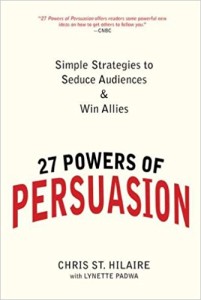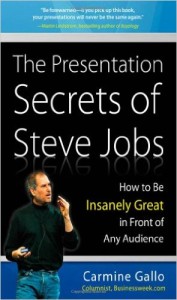Use the First Minute to Make Blog Readers Feel Safe

“Use the first five minutes to make people feel safe,” advises Chris St. Hilaire in 27 Powers of Persuasion. (This week my Say It for You blog is devoted to business books that offer wonderful guidance on selling and presentation skills.)
- Politicians know: You can change a conversation by touching the other person’s arm.
- Lawyers know: You don’t ask a question unless you already have the answer.
- Reporters know: People hate silence. They fill it with stuff you can use.
And the most relevant to online marketing through blogs: “Marketers know: It’s easiest to convince people of what they already believe.”
When your main goal is to persuade, the first five minutes are not so much about impressing other people as they are about putting them at ease, the author asserts. (According to blogbuffer.app.com, after seven minutes’ time on blogs, the average reader’s interest has peaked, so perhaps it makes sense to consider the first minute as the limit for putting your readers at ease.)
“If you already know the people you’re meeting with, use the first five minutes to make them feel valued,” St. Hillaire advises salespeople. Since a target market represents a set of individuals sharing similar needs or characteristics that your company hopes to serve, business blogging is the perfect tool for niche marketing. After all, the people who are finding your blog are those who are already online looking for information, products, or services that relate to what you know, what you have, and what you do!
Now they’ve found you, your two-part, first-minute challenge is to:
- put readers at ease by assuring them they’ve come to the right place
- make them feel valued
Searchers who’ve found your blog site won’t linger longer than a couple of seconds if what they see doesn’t reassure them they’ve come to the right place for the information they need. Each claim a content writer puts into a corporate blog needs to be put into context for the reader, so that the claim not only is true, but feels true to online visitors.
Use the first minute to make blog readers feel safe!





Follow us online!